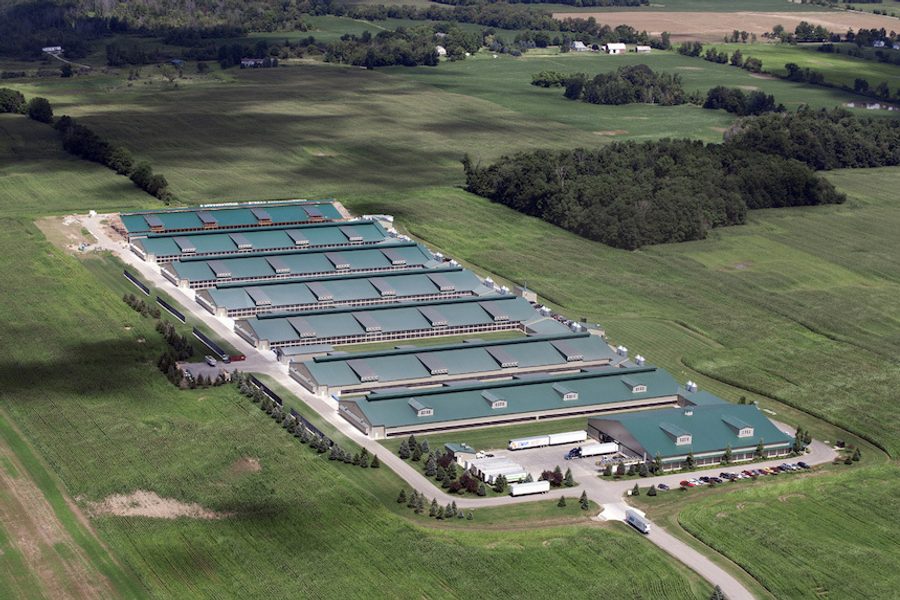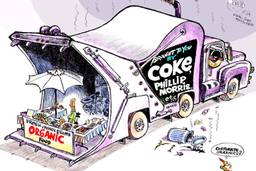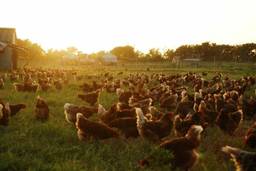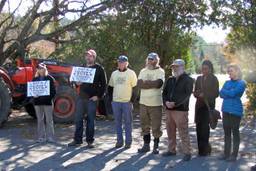Organic Industry Watchdog Calls USDA ‘Animal Welfare’ Rulemaking a Betrayal of Farmers and Consumers
The Cornucopia Institute

After years of delay, the United States Department of Agriculture (USDA) recently released their long-anticipated draft rule to address lapses in organic animal welfare standards. The nation’s most prominent organic industry watchdog, the Cornucopia Institute, blasts the proposal as being designed to further divide the industry, calling it, “a cynical excuse for the USDA to delay addressing widespread violations of the current law, in the interest of supporting industrial farming.”
Cornucopia’s attorney and policy experts found that the hodgepodge of new recommendations in the USDA’s proposal includes lenient elements that will institutionalize industrial livestock factories managing as many as two million chickens, or 18,000 dairy cows. At the same time, the policy group found brand new proposals that would require conditions that could put everyone currently producing organic milk on family-scale dairy farms out of business.
“We are calling this move by the USDA ‘cynical’ because reaction from the organic community and industry will provoke so much blowback that it makes the likelihood of the rule’s timely implementation highly unrealistic,” says Mark A. Kastel, Senior Farm Policy Analyst for The Cornucopia Institute, a public interest group based in Wisconsin.
Cornucopia says it was unfortunate that some animal welfare and consumer organizations have publicly offered their blanket endorsement of the rule, evidently, without consulting experts in organic animal husbandry. “The impetus for this regulation is on-target,” says Kastel, “but the draft-rule is entirely unacceptable without eliminating loopholes protecting the interests of factory livestock operations. Ethical farmers and consumers believe that organics implicitly call for, and federal regulations currently require, animals to be outside and able to exhibit their natural behaviors.”
While many in the organic family farm community believe that the rule is too lenient on industrial-scale egg producers, the draft rule simultaneously proposes onerous new regulations on dairy farmers, some of which they say will be impossible to implement.
Meanwhile corporate agribusiness interests, including what is claimed to be the largest organic egg producer in the country, Herbruck’s in Michigan (where almost two million birds are confined to buildings holding 150,000−200,000 each), were attempting an end-run around the USDA rulemaking in Congress.
In late May it appeared that agribusiness lobbyists had convinced powerful members of the Senate Appropriations Committee to adopt a restricted rider stripping the USDA of its ability to “implement or enforce the proposed rule,” according to a report by Bloomberg. After a tremendous amount of blowback from the public, that initiative failed.
“The USDA is mandated by law to consult with the NOSB on organic policy”
Over the last few years, The Cornucopia Institute has filed a number of formal legal complaints, some of which are still pending, alleging that organic egg, poultry and dairy facilities were illegally confining their livestock on giant CAFOs (concentrated animal feeding operations). The current regulations require “access to the outdoors” for all livestock and “access to pasture for ruminants.”
“Although additional, more prescriptive, language might be useful, the USDA should be enforcing the current rule already,” says Marie Burcham, an attorney with a background in environmental and animal law who serves as one of Cornucopia’s livestock policy analysts. “The lack of current enforcement is indefensible and the proposed timeline to implement new rulemaking could have these alleged scofflaws operating with impunity for another 6-8 years.”
The new draft rule would allow industrial producers to provide less than one square foot of space per bird indoors and 1.5 to 2 square feet outdoors. Half of that outdoor space can be covered with concrete or gravel.
“To illustrate how woefully inadequate the space provisions are, impeding the legal requirement that animals are allowed to exhibit their ‘natural instinct to behaviors,’ top independent animal welfare certification agencies require 108 square feet outdoors per bird, and the European organic standards require 43 square feet. One of the leading namebrand producers in this country has proven that five square feet outdoors per bird is economically viable,” added Burcham.
“I think organic consumers have a certain expectation that organic chickens are outside on grass and in the sunshine,” says nationally prominent pasture-farmer and author Joel Salatin. “To pretend that chickens can enjoy their lives, and display their “chickenness,” on a foot or two of concrete, gravel and bare dirt covered with waste, is a very bad joke, and I doubt if organic consumers are going to be laughing about this.”
At the same time, the Cornucopia analysis found that new requirements for dairy farmers to provide stalls for their animals that are wide enough that they can lie down laterally would result in the cows being able to urinate and defecate within their stalls, resulting in filthy and wet bedding. This would seriously compromise dairy cow health and hygienic sanitation of the organic milk supply.
“There is a reason why cows, in stalls, have their rear ends pointed toward the ‘gutter’ in dairy barns,” says Ed Maltby, executive director of the Northeast Organic Dairy Producers Alliance. “Cows must be positioned correctly to defecate outside of their stalls and away from their bedding. This rule will actually degrade the welfare of dairy animals rather than enhance it.”
Many of the most objectionable proposals in this draft rule had never been debated by the National Organic Standards Board (NOSB), nor subjected to the structured process for participation with organic industry stakeholders. The USDA is mandated by law to consult with the NOSB on organic policy.
“This is the first time that many participants in this industry have seen these radical recommendations,” says Burcham. “The reason we think this rulemaking draft is a delaying process is that it would be surprising, after the amount of expected public comment opposing these recommendations, that the USDA would be able to publish a final rule without radical modifications. That might very well obligate the agency to put out a revised draft before they are able to implement a final rule; USDA leadership would be acutely aware of this possibility.”
The Cornucopia Institute’s detailed analysis, along with instructions on how farmers, consumers and other organic stakeholders can submit their comments to the USDA before the June 13 public comment deadline, can be found here.







